

Part Four:
Christmas Lights Power and Safety
So now that you have learned about the history of christmas lights, learned about different christmas lamp types and different form factors, there’s two things that we’ve not considered: power (electricity) and control of the christmas light display.
These two things are usually taken for granted, which is understandable to a point – you plug them into an outlet, and they either turn on or blink, right? Well, I guess. I, however, am an overachieving geeky nerd that enjoys making a mountain out of a molehill when it comes to the simplest technological tasks.
Did I just use “mountain out of a molehill?” Oh yeah, you better believe it.
This guide will deal with providing power to your christmas light display. However, there is the need for a small disclaimer regarding this topic, since it is potentially deadly and/or property damaging. So, that being said – if you electrocute yourself when you’re hanging your christmas lights, it’s not my fault regardless of whether you read this guide or not. Caveat Emptor, it ain’t my fault if you blow your house up, all that stuff.
Okay, now that the BS legal part of this is over, there are a couple of really, really important things you should heed warning to when you’re preparing to load-in your christmas lights:
- Electricity can and will travel through you to get to its home, which is the ground. It won’t be good for you.
- If you discover a loose wire when you’re hanging all of your christmas lights, do not touch the bare wires. Also, refrain from licking them or rubbing them on your neck. All of these are bad ideas.
- Don’t use staples to hang your lights unless you have a guide for whatever stapler that you’re using that specifically shields the cable from the staples. Stapling into a strand of christmas lights will most likely short them out, creating a dangerous situation and more than likely a pain in your derriere.
- An easy one to remember: water and christmas lights equals non-fun. There are outdoor rated christmas lights; if you’re putting them outdoors, make sure they have the UL rating and make sure they’re listed as water-proof lighting.
- Last but not least, when you’re putting up christmas lghts, unless you live somewhere that has 60+ degree temperatures outside, it’s probably gonna be cold out. Hypothermia sucks, my friends. Bundle up, and make sure to take enough breaks when you’re out there christmas lighting your place up!
So, for those of you who do not know the ways to power your christmas lights or really anything about electricity at all, it’s pretty simple when you tear it down to the basic components – the christmas lights plug in to some place either in or around your house that is hooked up to the house’s power, and voila – the christmas lights turn on, you and your family go “wow,” and you go back inside to have some cocoa.
In a sense, that’s the bare bones sense of it. However, there are so many more things to consider – what happens when your lights burn out, for example? What happens if you plug too many christmas light strands together? These things are all items that you’ll be better for when you learn the answers. As far as wiring, there are typically two different ways that you’ll find your lights wired – series circuits and parallel circuits. Look at this diagram of a series christmas light circuit:
Series circuits are really easy to spot – they’re the strands that all go out when one lamp in the string is either blown or not seated properly in its base. The reason that this happens is that the connections into each christmas lamp are in a series – get it? Electricity must pass through each lamp in order for the next to get energized. They’re all dependent on each other for the flow of electrons. In a series circuit of christmas lights, each lamp’s filament is the circuit bridge – so when one lamp goes out, all of the lamps might as well have gone out because there is no way for electricity to get across the one broken filament to power the rest of the lamps. See the issue?
In modern christmas light strands, something called a shunt is added to each lamp to overcome the failure of the lamp’s filament for the rest of the lamps. If the filament fails, instead of losing the entire strand of lamps, the shunt keeps the electricity flowing through the dead lamp below the broken filament. I have no idea how I did it, but I got a close-up of a shunt in a mini-size christmas lamp. Keep in mind this lamp is about the size of a pencil eraser:
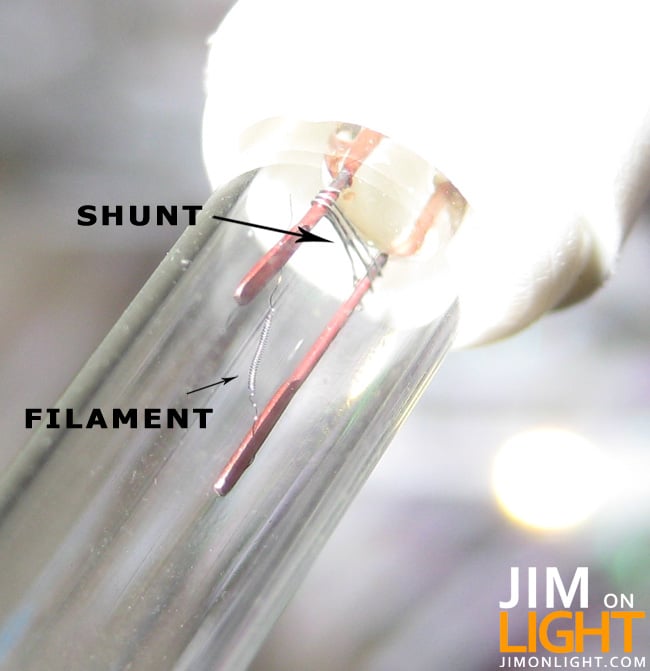
Pretty neat, huh?
You might also notice that some strands of christmas lights come with two or three really tiny fuses, like these:
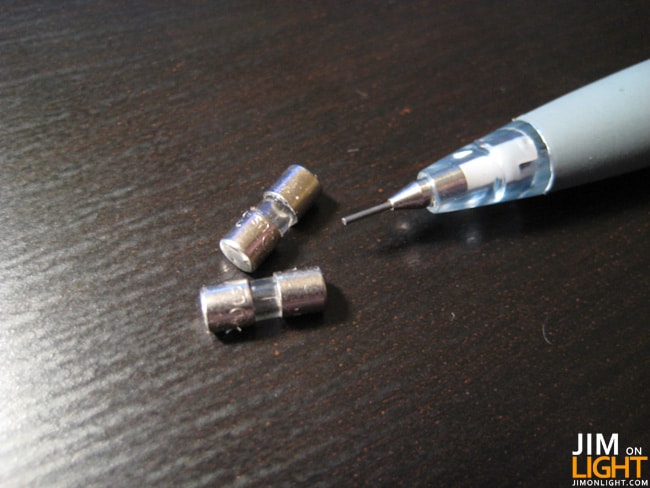
You’ll also probably notice that the fuses go into the female end of the strand, like here:
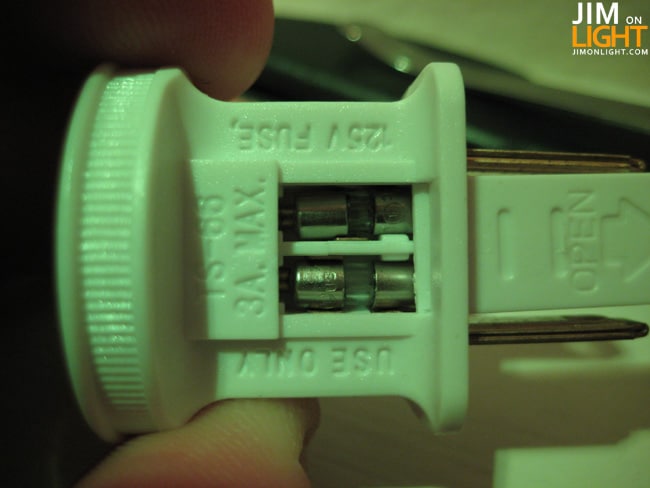
These fuses are typically 3 amps on a 50-light strand. This is going to become important in the next guide post.
The other way that christmas lights are typically wired is called parallel wiring. Parallel wiring beats the problem of having all lamps out when one lamp goes out by making a common electrical point for all lamps. Check out this diagram:
You all probably know about parallel circuits, so I assume this is a moot point – but as you can see from the diagram, the electricity would flow even if one of the lamps were to go out. Since there is a continuous connection across ALL lamps on the hot and the common lines, there is no way that one lamp would make all of them go out.
Another excellent thing about parallel circuits is the amount of lamps you can put in the chain. Unlike series circuits which require the voltage of all lamps in the string to add up to your total supplied voltage, parallel strings only require that the actual wire handle the amount of electricity (current) going through. In a series set of 50, for example, all of the lamps must be 2.5 volts so that the total voltage across all lamps adds up to 120 volts.
Wait a minute, you might ask yourself – 50 x 2.5 doesn’t equal 120! 48 x 2.5 equals 120. You are right to question that equation – 50 is more of a round number than 48, and adding the two extra lamps in the series lowers the brightness so imperceptibly that we can’t tell the difference. Also, 50 is more than 48, and you’re inclined to buy two more lamps. That’s our nature!
Let’s just quickly recap:
- keep warm when you’re out there hanging those christmas lights!
- don’t lick exposed christmas light wire
- electricity will kill you dead, so pay attention
- water and electricity like each other as much as Dick Cheney and the ACLU
Next up on JimOnLight.com – Part Five: Christmas Light Math!
Stay tuned!

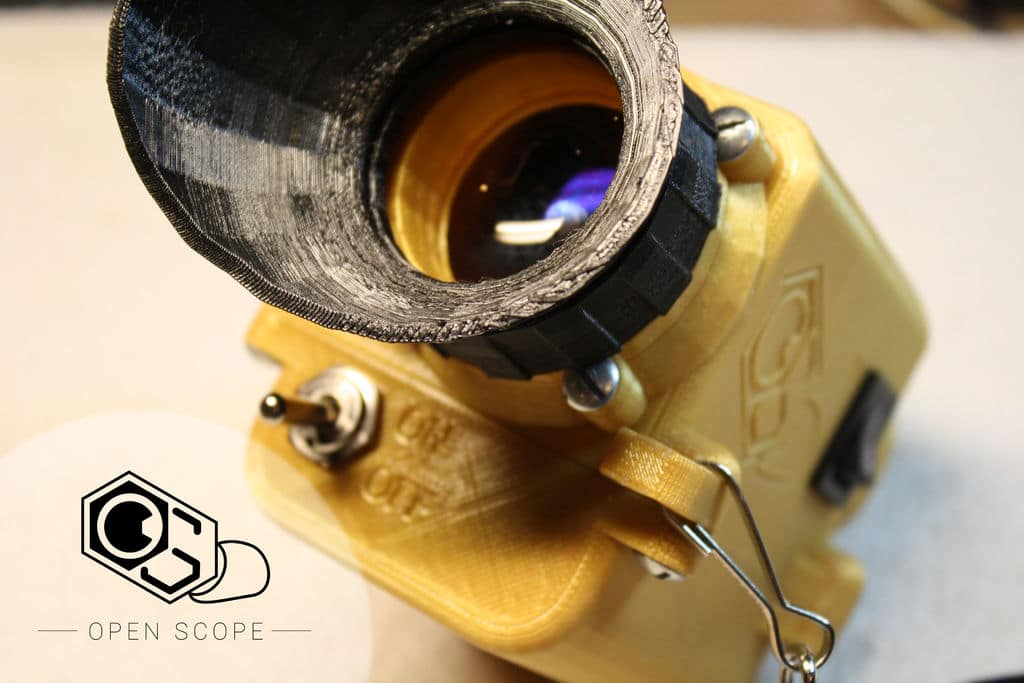

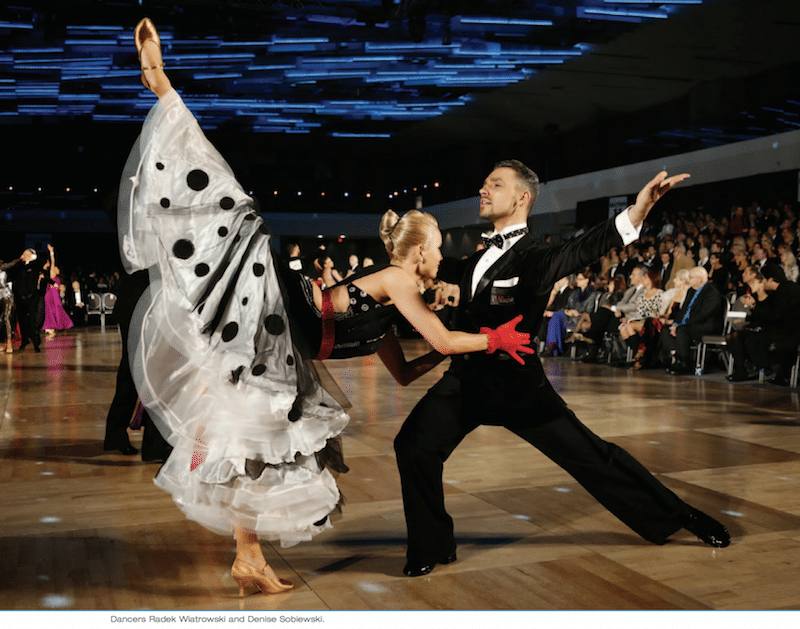

I have a light set (parallel, I think) which comes on for a while, then goes off, after a while it comes back on and continues this intermittent pattern continually. The interesting thing is, that if I plug a test lamp into the extra plug on the end of the string, it works all the time, even when the string goes off.
Comments are closed.